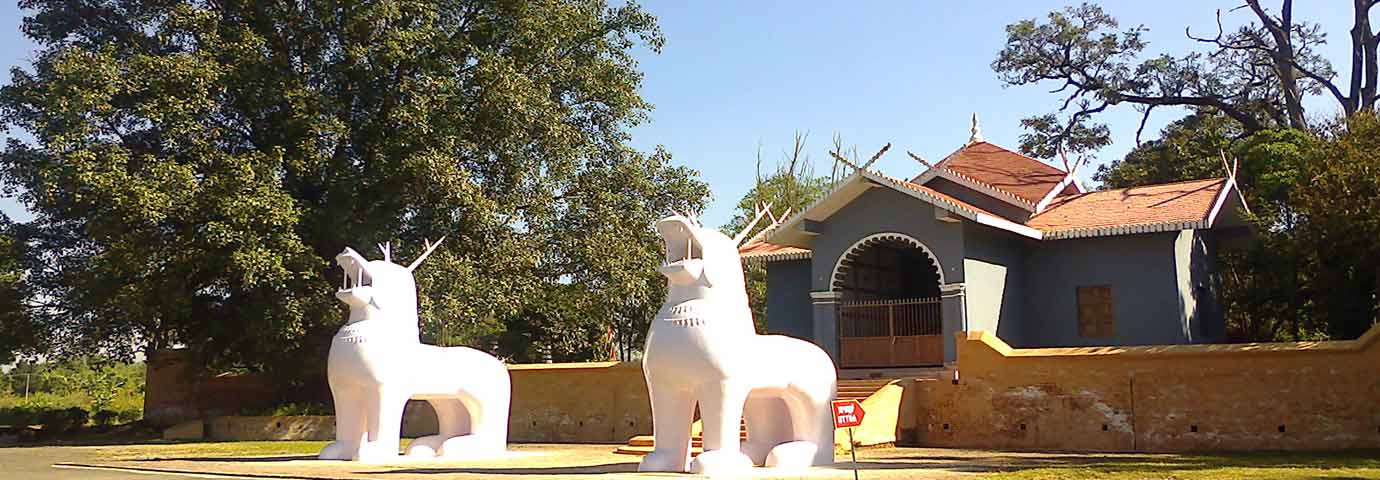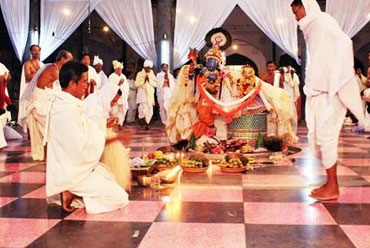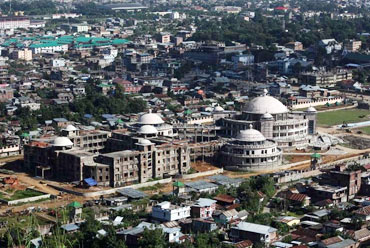Tourist Attractions in Imphal
Eight kilometers from Imphal, at the foot of the pine-covered hillocks, you will find a wealth of rare birds, animals and reptiles at the Manipur Zoological Gardens. In the zoo's sylvan surroundings, you will even get a glimpse of one of the rarest species of deer in the world, the graceful brow-antlered thamin deer.
Then there is the Khonghampat Orchidarium that has more than a hundred rare varieties of orchids. The best time to visit the orchidarium is in the months of April and May when the orchids are in full bloom.
One of the main features of Imphal is the Khwairamband Bazaar. What makes this market different is that it is run by women. Split into two sections on either side of the road, it has tribal women clad in colorful, traditional attire, selling everything from hand-woven shawls, skirts, vessels, mugs and mats to fish, lotus, oranges and orange-flavored honey. And if you wander in the quaint by lanes around the market, you will get a glimpse of Manipur's customs and traditions.
The core of Imphal's traditions, however, lies in its various temples. The most important of these is the Shri Govindajee Temple, a historic center for Vaishnavites. A simple, twin-domed structure, it adjoins the magnificent palace of the former rulers of Manipur. Constructed in the early 18th century under the Rajarishi Bhagyachandra regime, the temple comes alive during festivals when thousands of people come to offer prayers. In fact the best time to visit it is during Holi, also known in Manipur as Dolijatra or Yaosong when boys and girls do the Thaba Changba folk dance, all night. In the center of the temple stands the presiding deity, Lord Vishnu flanked by the shrines of Balarama and Krishna on one side and Jagannatha on the other. The temple also has a paved court and a large raised congregation hall.
The Manipur State Museum is another place that is worth a visit. The museum has a rich collection of Manipuri costumes, war implements, historical documents and relics, and gives you a sample of the state's complex history. Here, the visitors can also see sculptures of the local forest gods, and the motif of the Phakangba, the man who could turn himself into a dragon. Represented in his dragon form, Phakangba is considered as the ancestor of all Vaishnavites. All these things speak about the importance that the Manipuris attach to the organic relations of humanity with nature.
Right in the heart of the city is the tall Shahid Minar at the Bir Tirkendrajit Park that was built in memory of Manipur's martyrs who sacrificed their lives for India's independence.
From another era, there are the famous cemeteries of the British and the Indian armies that commemorate those who died in the Second World War. Well maintained by the Commonwealth Grave Commissions, it has stone markers and stone plaques, each of which has a record of the sacrifice made by the soldiers.
Yet another special feature of Imphal is the Archery Stakes that are held everyday on various low-lying stretches of ground just below a stand of conifers. Evolved from an ancient tribal sport, it is still very popular in Manipur and one can see archers shooting as many as 500 arrows within a span of a few minutes.
For the history buffs, there is in the heart of the city the Old Palace with interesting ruins of an old fortress wall and a palace.
If you want to add a touch of glamour to your visit, plan a trip to the city during November when Imphal becomes the stage for a national festival of classical dance on the lines of the Khajuraho, Ellora and Badrinath festivals.
If you are one of those who are always on the lookout for the quaint and the unusual, get off the beaten track and visit Imphal. You may feel that Imphal is too far away but this is not really true. It is far easier to reach than you may think. You can reach either through Calcutta or Guwahati by any fast train or fly down to either of these places and then to Imphal. The airfare in the northeastern sector is highly subsidized and is just a little more than the first-class railway fare. Alternatively, you may take a bus from Guwahati. The road journey, though a little tiring and time consuming, brings to you unspoilt scenes, limitless greens, virgin forests and crisp air. However, if you wish to travel by road, keep a passport-size photograph handy because you will required to get an Inner Line Permit-a mere formality-for traveling through Nagaland to reach Imphal.
Imphal boasts of the biggest freshwater lake in the country, the Loktak.
Places Around Imphal
There are a number of places an hour or two away from Imphal, each more beautiful than the other. Moirang is just 45 km away and it is here that Netaji Subhash Chandra Bose first hoisted the flag of the Indian National Army (INA) on Indian soil. There is an INA museum, which contains letters, photographs, badges of rank and other articles associated with this movement. There is also a statue of Netaji. The graceful Khamba-Thoibi dance originated here.
Keibul Lamjao National Park, at a distance of 53 km, is supposed to be the last natural habitat of the thamin deer.
Ukhrul (83 km) is the highest hill station of the state; Moreh (100 km) is close to the Burma border and is a commercial center. Tengnoupal is 69 km away and from here one can have a full view of the valley of Manipur.







